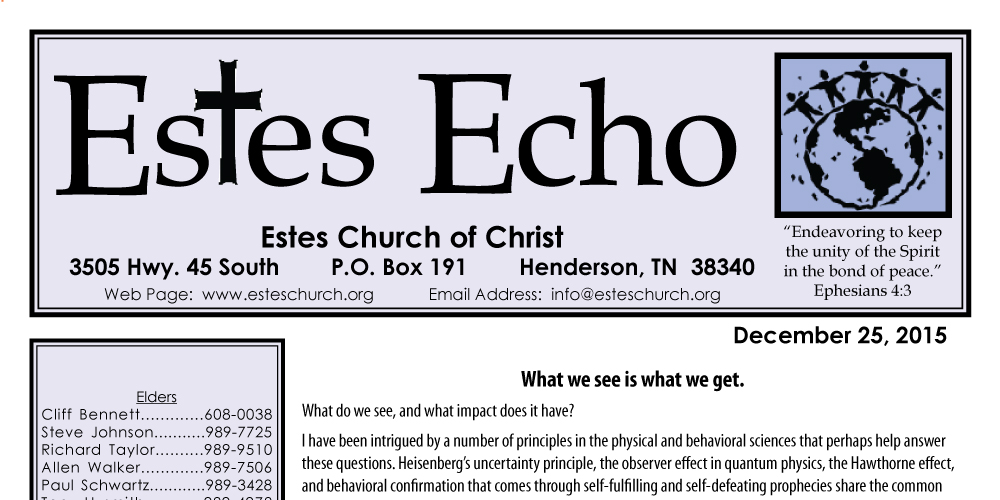Estes Echo
What we see is what we get.
What do we see, and what impact does it have?
I have been intrigued by a number of principles in the physical and behavioral sciences that perhaps help answer these questions. Heisenberg’s uncertainty principle, the observer effect in quantum physics, the Hawthorne effect, and behavioral confirmation that comes through self-fulfilling and self-defeating prophecies share the common perspective that the mere observation of a phenomenon changes that phenomenon. In other words, what we look for or what we expect is what we most often find because of our interaction with the phenomenon. Perhaps stated another way, “What we see is what we get.”
As a middle school band director, I often pushed these concepts to their limits. Teaching youngsters how to play a musical instrument can at times be a torturous and challenging task. Getting them to love, appreciate, and perform quality music can appear insurmountable. After the first couple of years of teaching, it became evident that the more I expected of my students, the better they responded. I also learned that middle school students were some of the best people on earth because they had no fear, they were not aware of their limitations, and they sought affirmation from their peers and adults.
If I set the bar high, most would work hard to achieve it, and the higher it was set, the harder they would work. Looking back, those were some very fun years that ultimately resulted in those ensembles performing music usually only approached by high school ensembles and in years to come produced several all-state musicians and future music educators. Hopefully, all of my students better understood their potential, grew to value the benefits of hard work, and grew in their affinity for music.
What is it that we see in the people around us? Do we focus on their limitations? Do we point out their shortcomings? Alternatively, do we see their potential or their positive qualities? Better yet, do we see and encourage that potential? Do we see those around us as individuals who are made in the image of God and as individuals who have souls that need support and encouragement to reach their potential on this earth and to ultimately claim the prize of heaven?
Jesus looked for the best in some of the most unapproachable people. He looked for and encouraged the best in those that he worked with and knew most closely. Ultimately, he completely gave of himself to provide an example and The Way.
How was he able to do this? Christ is love, and love is patient and kind. Love does not envy or boast. It is not proud, rude, self-seeking, or easily angered. It keeps no record of wrongs. Love does not delight in evil but rejoices with the truth. It always protects, always trusts, always hopes, and always perseveres. Love never fails. (1 Cor. 13:4-8) Love was the lens through which Christ observed and interacted with people. He saw with love. He shared love. He expected love. People responded to that love. Most importantly, people will continue to respond when authentic and caring individuals love them through encouragement and support, especially when that love is rooted in the truth, peace, grace, and mercy of the Gospel.
What we see in others is what we get….or perhaps Jesus said it best: we will find that which we seek (Matthew 7:7).
–C. J. Vires









